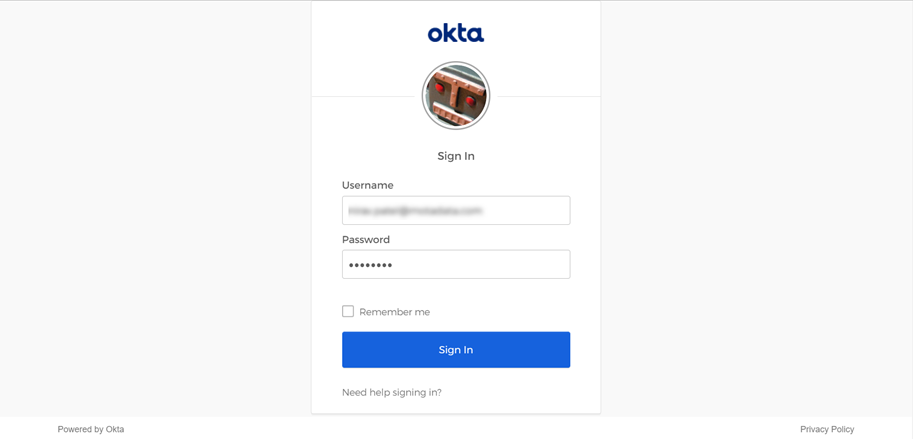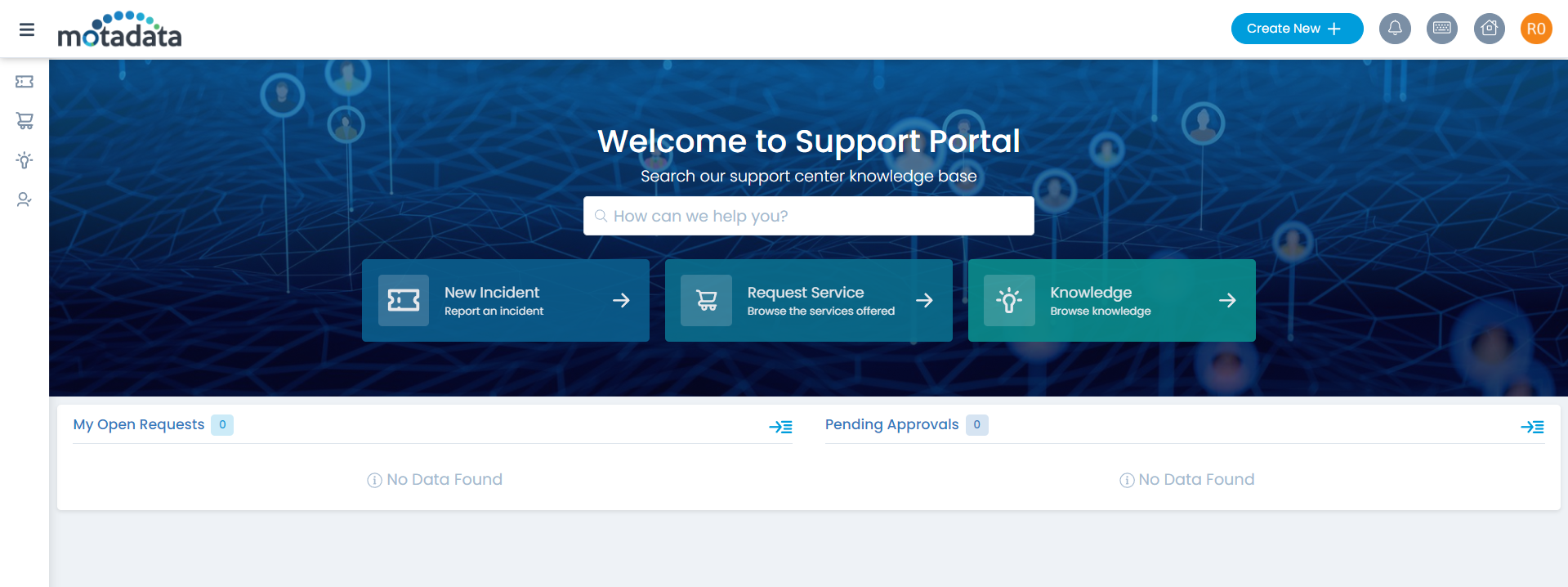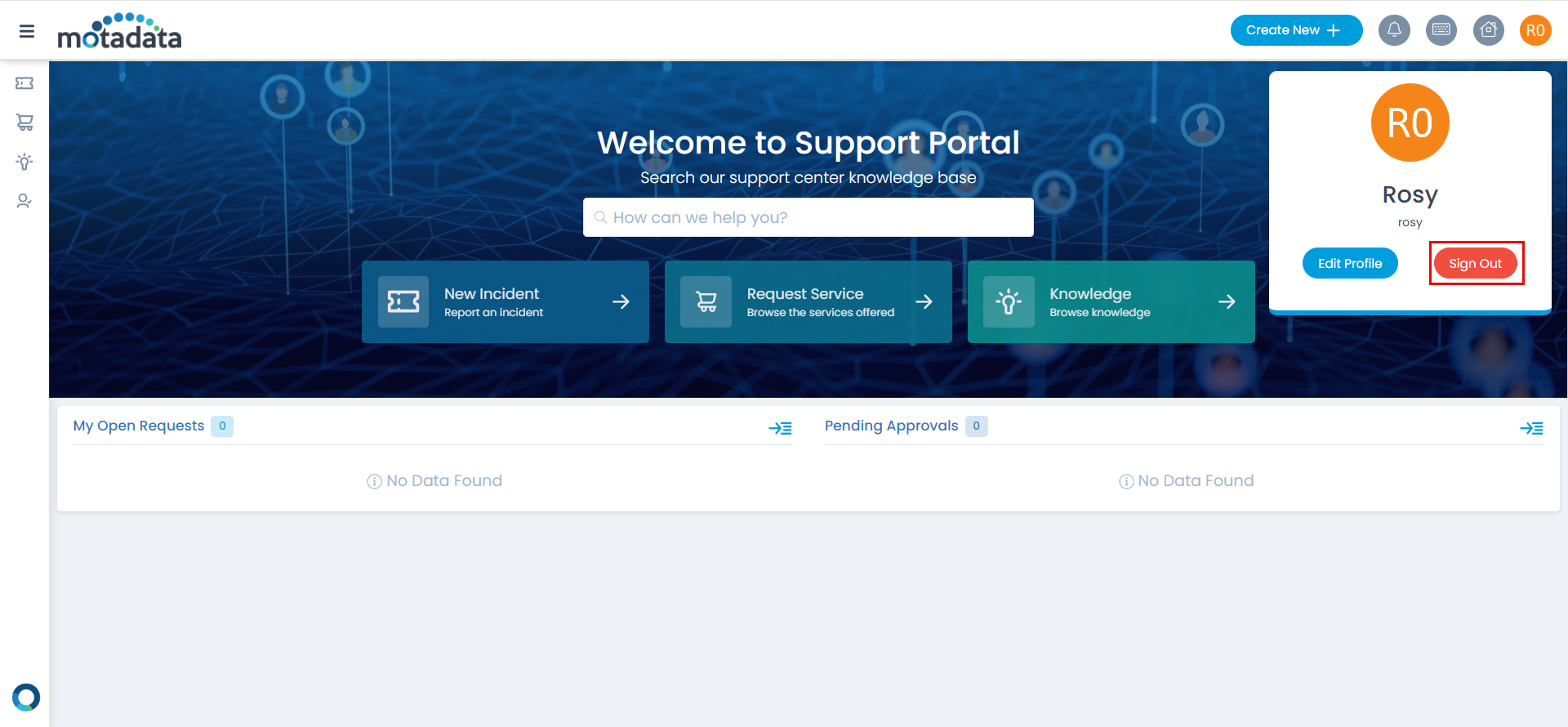OKTA
ServiceOps offers support for SAML 2.0, which facilitates integration for Single Sign-On. ServiceOps acts as the Service Provider (SP) and it integrates with Identity Providers (IDP) using SAML 2.0. The integration basically involves supplying details about SP to IDP and vice-versa. Once you integrate ServiceOps with an IDP, the users simply have to sign-in to IDP and then, they can automatically sign-in to ServiceOps from the respective identity provider’s GUI without having to provide credentials again. ServiceOps supports integration with OKTA.
To configure SSO with the OKTA service, follow the below steps:
Step 1: Sign-in to the ServiceOps portal as a Technician.
Step 2: Navigate to Settings > Admin > Organization > System Preference > Application Settings tab. Verify that the Base URL is the same as the portal URL. If it has the default IP Address, update it.
Step 3: Navigate to Settings > Admin > Users > SSO Configuration > Identity Providers and click Add Identity Provider. The following popup appears.

Step 4: Provide the following details. In this, the IDP details of the Okta portal are to be configured in the ServiceOps while the SP details in the Okta.
| Parameter | Description |
|---|---|
| Name | Enter the name of the identity provider. |
| Identity Provider | Select the Identity Provider as Azure AD/Office 365 or Other. If Other is selected, you can set the IDP Logo and IDP Login Button Text. Once configured, the respective login button will appear on the Login page. |
| Auto Create User | Enable if the user is to be created automatically, if not available in the system. By default, disabled. |
| IDP Entity ID | Enter the Entity ID of the IDP from the Okta portal. It is a mandatory field. You can get these details from Okta portal > App details > Sign On > SAML Signing Certificates as shown in the figure below. |
| IDP Login URL | Enter the login URL of the IDP on which the user will get redirected. It is a mandatory field. You can get this from the Okta portal. |
| IDP Logout URL | Enter the logout URL of the IDP on which the user will be redirected once signing-out from the ServiceOps portal. If not provided, the user will remain on the same page. This field is optional. |
| IDP Security Certificate | Enter the certificate that IDP provides for integration. The response sent by the IDP is validated using it. |

| SP Entity ID | It displays the entity ID of the Service Provider. You have to configure this in the Okta portal. |
| Assertion Consumer URL | It displays the endpoint of the ServiceOps application where the IDP posts the SAML responses. You have to configure this in the Okta portal. |
| SP Single Logout URL | It displays the URL to which the user gets redirected after sign-out. You have to configure this in the Okta portal. |
| SP Public Key | It is provided by the Service Provider. |
| SP Private Key | It is provided by the Service Provider. |
| Mappings | Map additional fields required for more details. Using this, whenever the values of the mapped fields are changed in the respective provider, they will automatically get updated in ServiceOps. Note: Field Mapping is unsupported for Multi-Select Drop Down, Checkbox, Date Field, and Dependent (Custom Type) field types. |
Step 5: Click Add, and the provider will be displayed on the list page.
Step 6: In OKTA, navigate to Applications > Applications > Browse App Catalog > General tab, and the following page will appear:

Step 7: Edit the SAML Settings and navigate to Configure SAML tab, as shown below:

Configure the following details:
- Single sign on URL
- Audience URI (SP Entity ID)
- Attribute Statements (optional): Configure attributes for mapping fields.
You can access these details from ServiceOps Home page > Admin > Users > SSO Configuration page.

Once configured, click Next, and Finish. The SSO is now configured.
Step 8: You can verify this, by opening the ServiceOps Portal, and signing-in using the SSO Login button as shown below.

Step 9: You will be redirected to the OKTA sign-in page, as shown below:

Step 10: Sign-in to OKTA, and you will be redirected to the ServiceOps portal as shown below:

Step 11: To sign-out, click on the username and click Sign-Out. You will be redirected to the OKTA page again or remain on the portal as per the configured SAML logout URL.

Once the SSO is configured, you can now proceed to import users from the Okta directory into ServiceOps, enabling Okta users to authenticate via SSO.